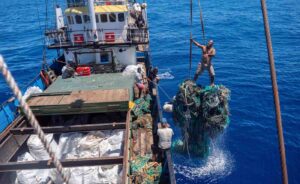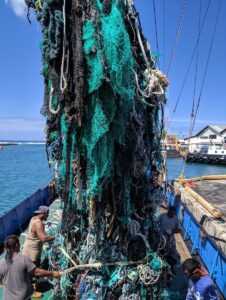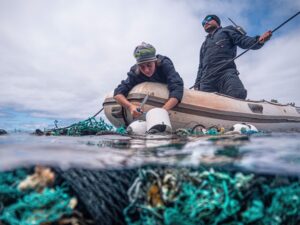The Ocean Voyages Institute has just removed more than 100 tons of plastic waste from the Great Pacific Garbage Patch

The nonprofit Ocean Voyages Institute in Hawaii broke the world record for the largest clean-up of open oceans in history.
On a 48-day journey, the crew removed more than 100 tons of plastic using a special GPS satellite tracking system that leads them directly to the large garbage trophies.

Although the system was not as well known as the young Dutch inventor’s Ocean Cleanup, it turned out to be the most effective system to date.
They rely on volunteers on board yachts and ships to tag tangled fishing nets full of trash with GPS satellite trackers when they come across them.
When the Ocean Voyages Institute takes a trip it can enlarge all of the marked spots, which usually results in much larger pieces.

As the group’s founder, Mary Crowley, suggested, the visible plastic stain is usually just the tip of the iceberg, indicating garbage collectors in a much larger area just below the surface.

Ocean currents tend to “sort” floating debris and move it completely, so a given fishing net within a 15 mile radius can result in more nets and a high density of other debris.
Although the nets are themselves poisonous to marine life, they resemble giant garbage bags.

Crowley calls them “Ghost Networks” and he calls them “Ghost-Net Buster”.
On their team’s first 25-day trip, they collected almost 50 tons of plastic waste. They returned for a third flight two days after disembarking their last 100-ton cargo in Honolulu.
The institute commits to 0% of the plastic waste that goes to the landfill and sends the classified waste to the recycling companies to turn it into insulation, energy, etc.
While it’s easiest to collect plastic after you’ve washed it on the beaches, Crowley says it’s important to collect as much plastic as you can before it gets there:
“The oceans can’t wait for these webs and debris to break down into microplastics, weakening the ocean’s ability to store carbon and poison the ocean’s fragile food web.”
The number and size of future expeditions will depend on donor support. You can donate a check or PayPal on their website.





